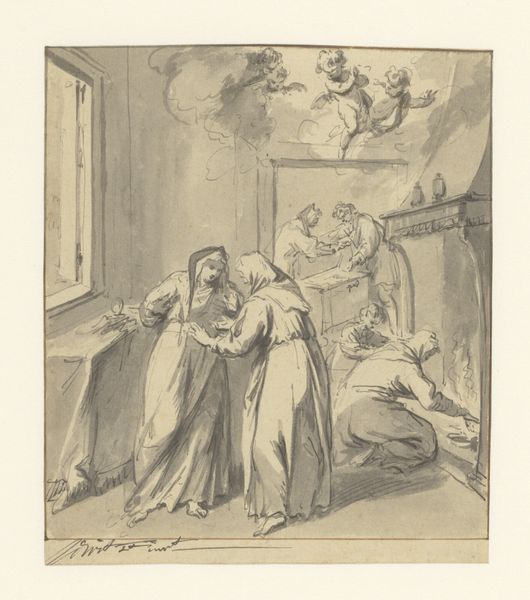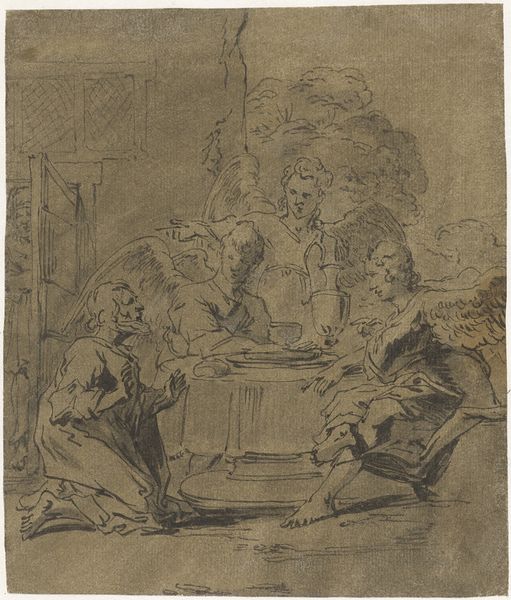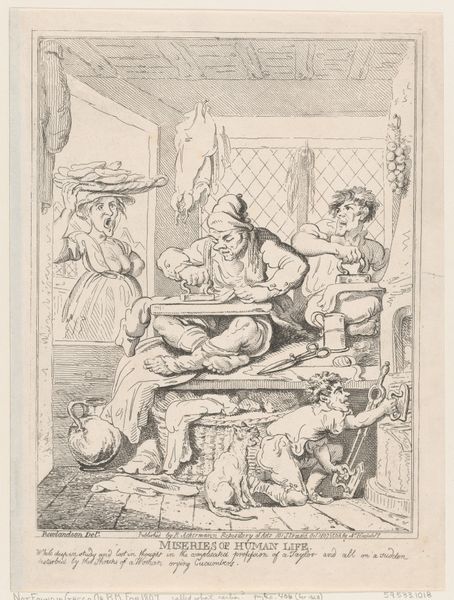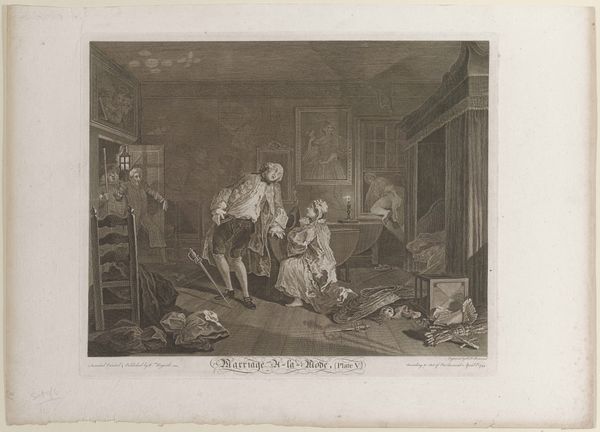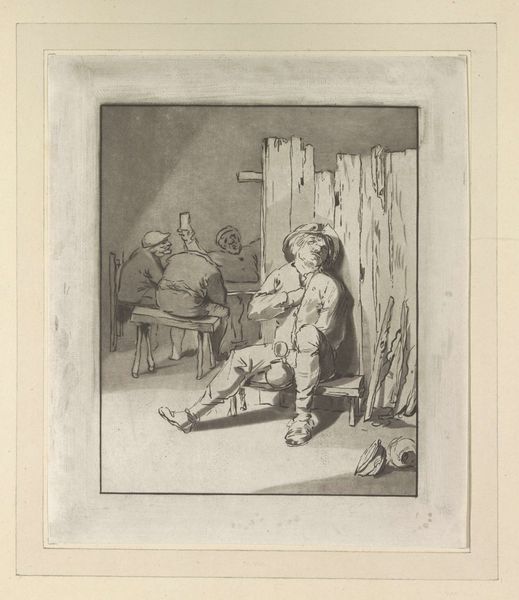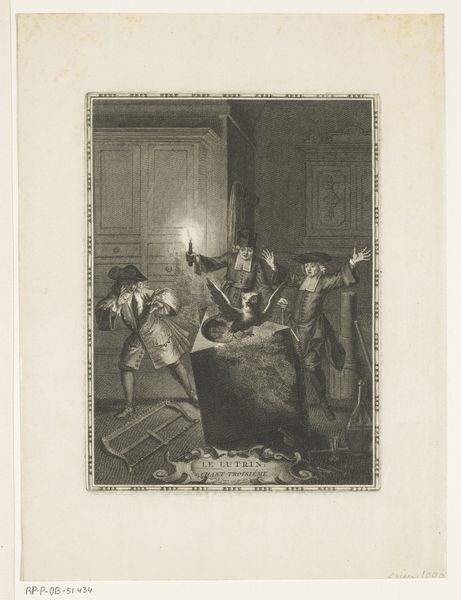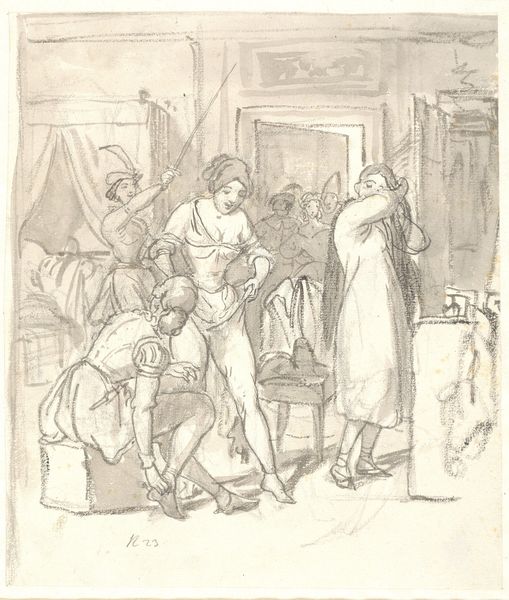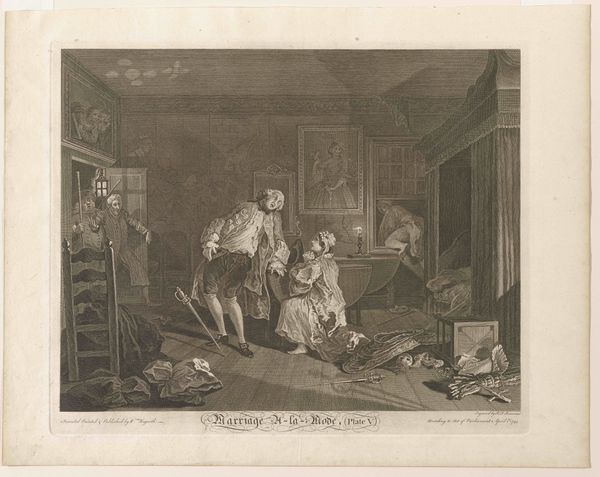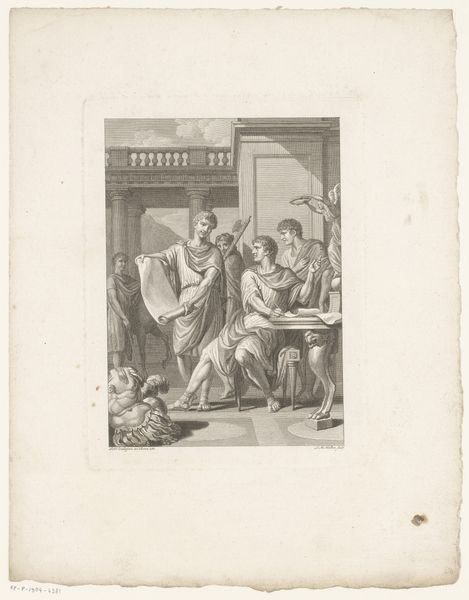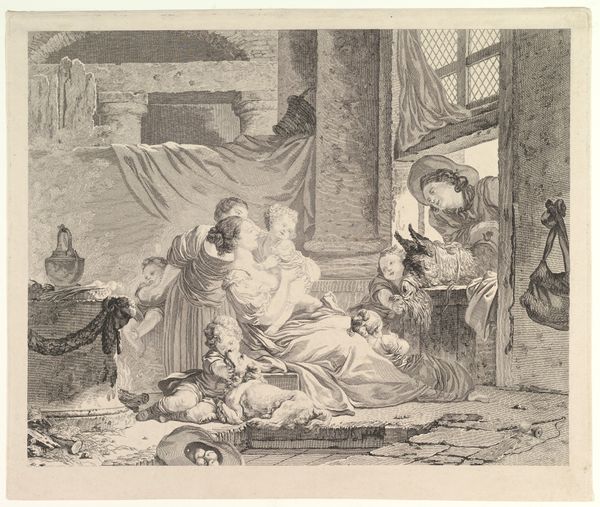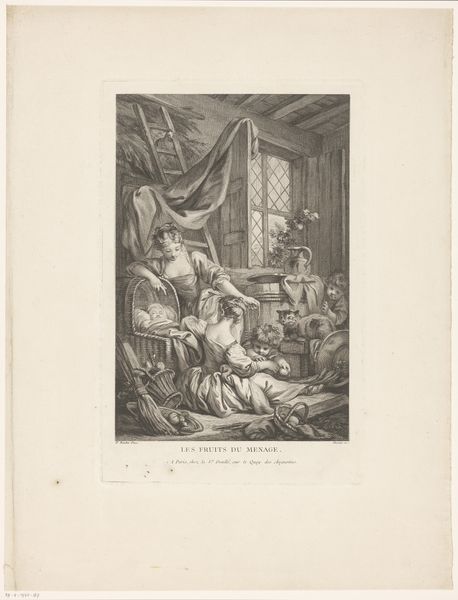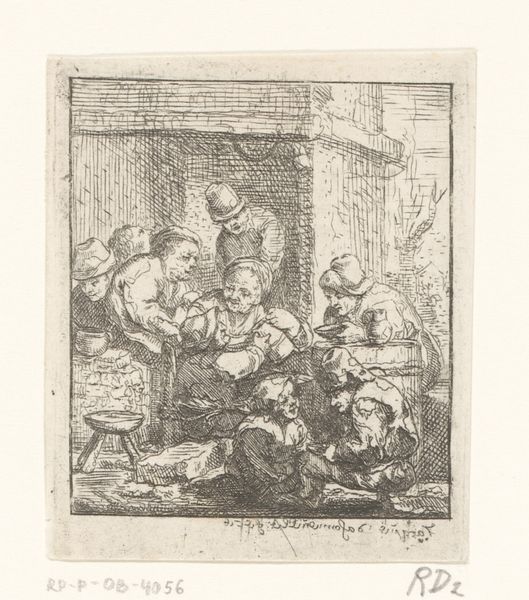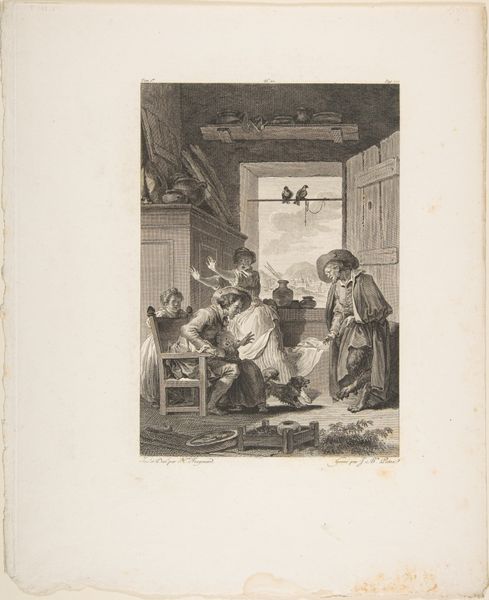
drawing, ink, pen
#
drawing
#
narrative-art
#
baroque
#
caricature
#
figuration
#
ink
#
pen
#
genre-painting
Dimensions: height 159 cm, width 146 cm
Copyright: Rijks Museum: Open Domain
Curator: Welcome. The work before us is Jacob de Wit's "The Miracle of Amsterdam: The Sick Child," likely created between 1705 and 1754. Editor: It’s...chaotic! A swirl of bodies, arms flailing, centered around a tiny figure on the ground. The loose ink and pen strokes amplify the sense of urgency and disorder. Curator: De Wit was a master of illusionistic church ceilings, but he also produced drawings like this, often depicting everyday scenes imbued with a religious context reflecting Amsterdam's powerful Catholic underground at the time. Here, it references the Miracle of Amsterdam and the healing powers of Eucharist. Editor: Interesting. Stylistically, the dynamic composition and dramatic lighting strongly signal Baroque sensibilities. Look at how the artist uses washes to create depth and shadows, guiding the viewer's eye to that central, illuminated area where the child lies. Curator: Exactly, notice how De Wit places the scene in a simple home. These drawings provided comfort to the Catholic believers, confirming that the power of faith was working miracles through them even in their daily lives, helping them persevere under political marginalization. Editor: Beyond the historical context, there's also the emotional register of the piece. The gestures and expressions convey a range of emotions: fear, desperation, hope. The rapid execution contributes to this feeling; it captures the fleeting moment, the immediacy of the event. Curator: And this event was one in which a dying child was laid on a table, near a fire where someone disposed of the sacrament, and it survived when fire did not catch onto it. The child recovers afterwards because of this miraculous protection of Christ’s body. Editor: Yes, it invites a strong sense of engagement from the viewer who feels compelled to ponder the circumstances surrounding this moment. Curator: Through it, we can perceive an affirmation of collective belief and solidarity despite the difficult circumstances. Editor: Considering the work’s formal characteristics alongside its history and the collective emotions depicted reveals new connections of its value.
Comments
No comments
Be the first to comment and join the conversation on the ultimate creative platform.
